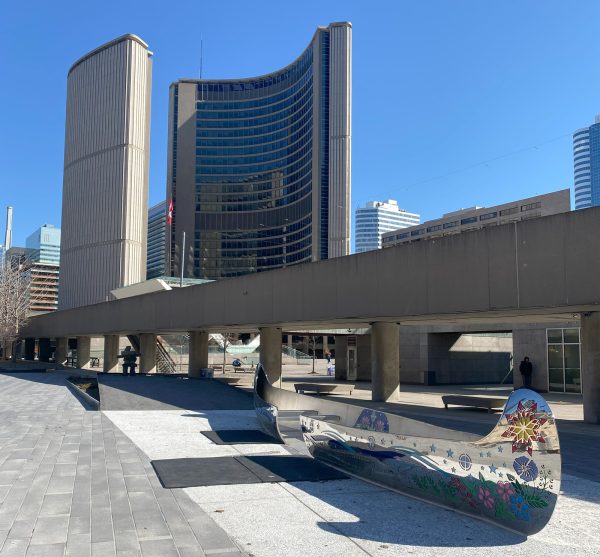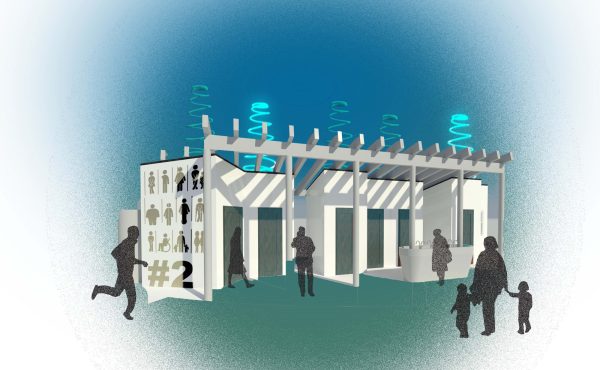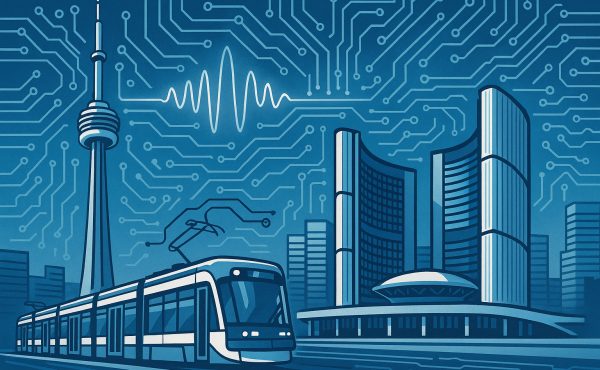Meaningful Change
For the first time, Toronto has an Indigenous-named federal riding: Taiaiako’n—Parkdale—High Park. This change, brought forward through the Federal Electoral Districts Redistribution process, marks an important step in recognizing the deep Indigenous history of our city. Taiaiako’n was once an Indigenous village along the Humber River, near what is now Baby Point. The Federal Electoral Boundaries Commission acknowledged this history and stated that the name change was made “in a spirit of reconciliation,” recognizing the Haudenosaunee village and burial mounds in High Park.
This milestone invites a larger question: how might Toronto extend this approach beyond electoral boundaries? Can we rename our city wards to honour Indigenous histories and reflect our ongoing commitment to truth and reconciliation? Other cities have already taken this step, demonstrating that such a process is both possible and profoundly meaningful. Edmonton has led the way in this regard, and there are valuable lessons we can learn from its approach.
Learning from Edmonton
In 2020, Edmonton’s City Council was approached by Indigenous Elders and community members to consider renaming municipal wards with Indigenous names. Council directed its administration and naming committee to explore this, and the result was a process led by Indigenous women, known as iyiniw iskwewak wihtwawin (the committee of Indigenous matriarchs). The committee, composed of 17 Indigenous women from First Nations in Treaties 6, 7, and 8, as well as Métis and Inuit representatives, was entrusted with the task of selecting names that reflected deep connections to the land and the diverse Indigenous histories of Edmonton.
The naming process was guided by ceremony and community consultation. Indigenous languages, histories, and cultures were honored through names such as Nakota Isga (meaning “the people” in Nakota), Anirniq (Inuit for “breath, the life in all things”), and tastawiyiniwak (a Cree term for “the In-between people”). These names replaced previously generic numerical ward identifiers, embedding Indigenous knowledge into the city’s governance structure.
Why Toronto Should Take the Next Step
Toronto has already begun incorporating Indigenous place names, from small laneways to larger streets and neighbourhoods. But ward names remain an overlooked opportunity for meaningful recognition. While we have made strides with initiatives like the City’s Reconciliation Action Plan (2022-2032) (PDF), renaming our wards would demonstrate a tangible commitment to restoring Indigenous histories within the fabric of our municipal structures.
The City’s Reconciliation Action Plan outlines several priorities, including:
- Restoring Truth: Ensuring that Indigenous histories are recognized and shared with the broader community.
- Righting Relations and Sharing Power: Creating avenues for Indigenous leadership in civic decision-making.
- Justice and Visibility: Amplifying Indigenous presence in the cityscape.
Renaming our wards aligns with these priorities. It is a step toward ensuring that Indigenous histories are not just acknowledged but actively woven into our municipal governance.
Making This Process Inclusive and Respectful
Toronto can and should embark on this journey, but it must do so in a way that is led by Indigenous voices. The process should not be about the City renaming wards on behalf of Indigenous communities but rather about creating space for Indigenous leaders to guide the conversation.
Key steps could include:
- Forming an Indigenous-led circle, similar to Edmonton’s iyiniw iskwewak wihtwawin, to oversee the renaming process.
- Meaningful engagement with First Nations, Inuit, and Métis.
- Utilizing many of the grounding policies from the Port Lands Indigenous Place Naming Initiative
- Integrating ceremony and traditional knowledge into the selection of names.
- Developing educational tools to help residents learn about the significance and pronunciation of new names.
Overcoming Potential Challenges
As seen with the Taiaiako’n—Parkdale—High Park renaming, there may be pushback from some residents. Concerns often center around pronunciation, familiarity, and historical continuity. However, these challenges can be addressed through public engagement and education.
Edmonton addressed this by providing pronunciation guides and ensuring that multiple Indigenous cultures were represented. Similarly, Toronto can develop resources to help residents understand the significance of each name, fostering broader acceptance and appreciation.
A City That Honors Its Past and Future
This city has been a gathering place for Indigenous Peoples for thousands of years, and our governance structures should reflect that enduring presence.
By following the example set by Edmonton and working in partnership with the City’s Indigenous Affairs Office (IAO) and most importantly, Indigenous communities, Toronto can take another meaningful step in its ongoing journey toward reconciliation. The process doesn’t have to be complicated, but it must be done right—with Indigenous leadership at its core.
What’s in a name? A history. A presence. A future. It’s time Toronto reflects that truth in the very names of our city wards.
Lanrick Bennett Jr. is Urbanist-in-Residence at the University of Toronto School of Cities
Photo by Lanrick Bennett Jr.




One comment
Really? Naming things is the *laziest* thing to do. Political boundaries are not in anyway respectful of First Nations, they are colonial constructs. I know the Edmonton folks may think the other way, but when white politicans redraw the boundaries or eliminate them (like Ontario did to Toronto City Council), then what do you do?
Reconciliation isn’t about tokenism, it doesn’t teach anyone anything. Toronto, Etobicoke, Mississauga, Ottawa, and hundreds of towns are all words with indigenous heritage. But that hasn’t changed jack squat about how colonialism is viewed.
Learning about how Indigenous cultures see and embrace nature and the balance between humans and the earth is way more practical and respectful that trying to use words of a language that had no written words. Events, teachings, etc. are the path, not nods to things like riding names that can be ignored.
And please, whatever public consultation that will take place will be pathetic at best. You’ll get 50 people giving their opinion and that will be the extent of engagement, similar to Dundas Sq fiasco.
If the City wishes to begin to name projects from the start with a indigenous heritage (ie the Don River island has been christened with an original name) then at least that feels authentic.